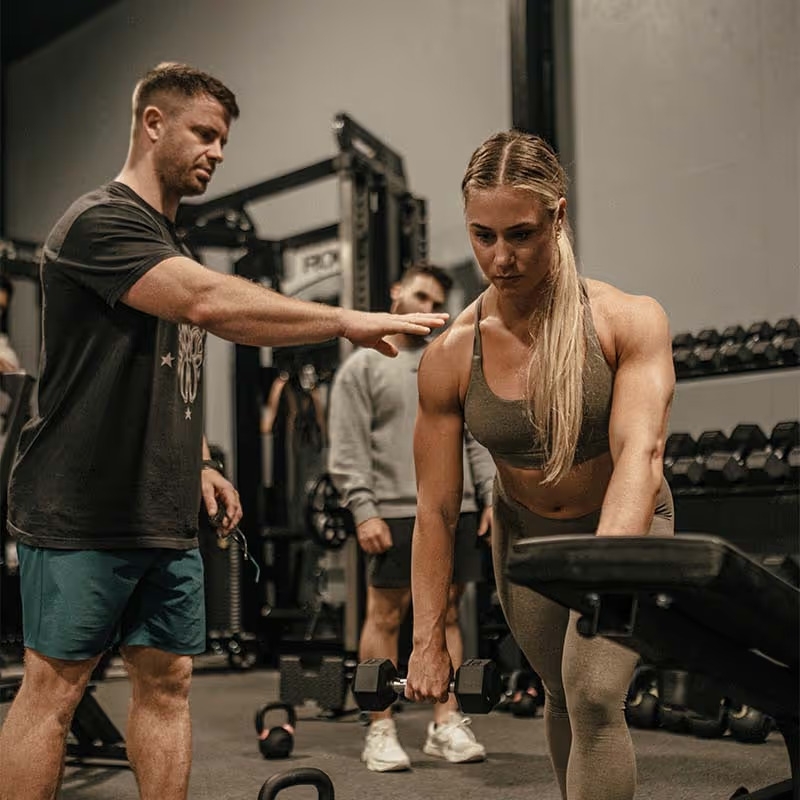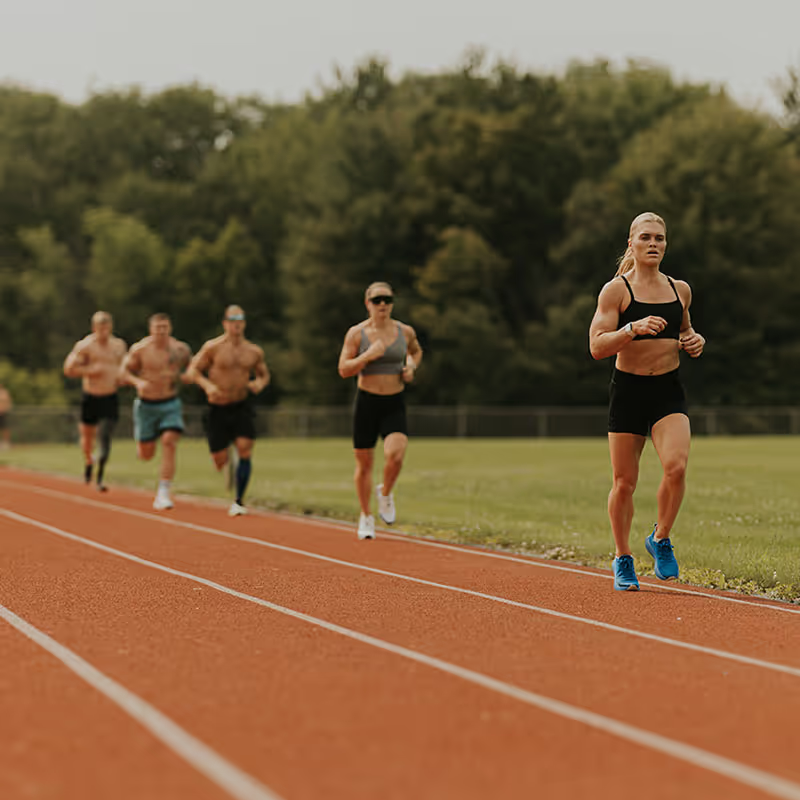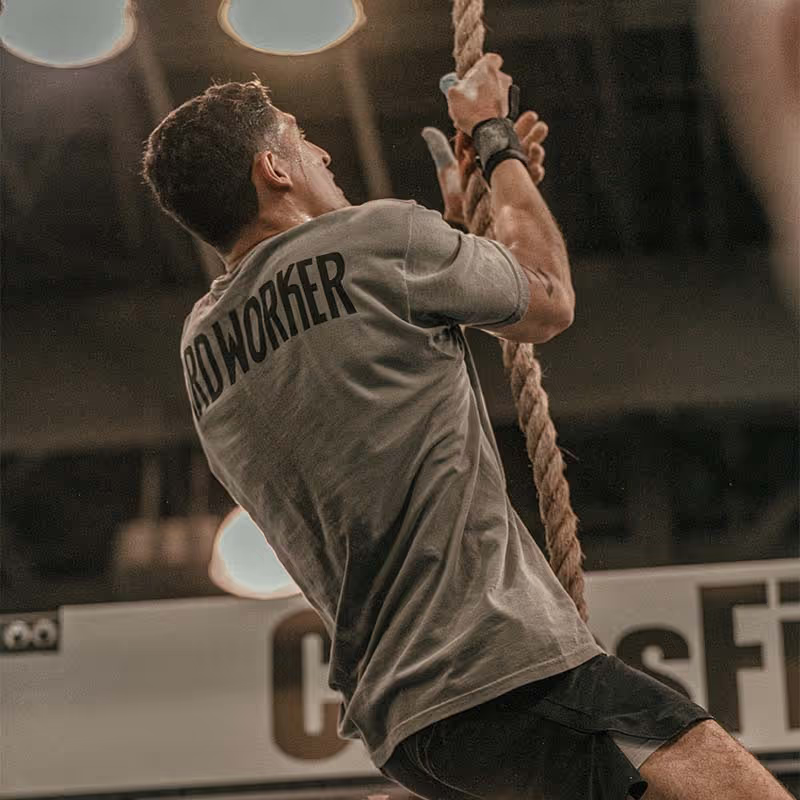What sets the top athletes apart?
Coach Ste draws on his years of experience in both competing and coaching to bring you an in-depth insight into how we should approach our training to be the best we can be.
Aug 29, 2024
A lot of the time, the natural thought process for athletes who are looking to progress to the big stage is that they need to train like the Games athletes in order to get there. The training itself is important, but in my opinion, it isn’t the deal breaker that makes that dream a reality.
I made the progression through the ranks of CrossFit myself, from being a competitor at a local level competition to the national level, then onto the Regionals/Semifinals stage, and finally at the main event: The CrossFit Games.
I didn’t really have anyone tell me the way to get there
The path wasn’t clear, and it wasn’t just a case of “do the training, and you will get there.” After every competition I finished, I would reflect on what I needed to get better at and then break down into the finest detail how I would improve. This wasn’t just based on certain exercises or movements — it involved recovering better, sleeping better, being able to train more, eating better, and creating more mental space to train with more intent. This wasn’t something I wrote down in a diary or notebook; it became an obsessive, constant thought. My wife would often catch me staring at a wall as I’d be breaking down every conscious action I needed to take that day or week to make those things happen.
I was then fortunate enough to be trusted to play a coaching role in helping over 20 athletes also compete at the CrossFit Games. I found some peace of mind when I realized that the things I did as an athlete weren’t just something that worked for me; they worked and continue to work for others. I felt even more at ease when I witnessed athletes I started coaching, who were already at that level, exhibiting these actions and behaviors as second nature. The more I became a fan of elite sports and started gaining insights into how top professionals in sports worldwide operate, the more I began to give myself a little pat on the back for approaching my career the way I did.
Sure, in hindsight, there are better ways I could have done it. But I have no regrets about how I went about anything because I’m proud of what I achieved, and it has led me to so many amazing opportunities, including writing this article!
The level of commitment required for an athlete to qualify for the CrossFit Games should probably be classified more under the umbrella of “obsession.” That sounds cliché and unhealthy, but this is no different from any other elite level in sport. As I’m writing this, I have the Olympics playing in the background, and the level of respect I have for any athlete on that stage, no matter the country, sport, or finishing position, is immense. To be on that stage shows a huge degree of obsession, commitment, and drive. I love it, and I love that they put themselves in the arena for that one shot that comes around every four years.
Mat Fraser has publicly said numerous times that his life decisions became simple. Any decision would come down to a simple question: “Will this add to or take away from my chances of winning the CrossFit Games?” If it added, he did it; if it didn’t, he didn’t. That concept seems really simple and easy to abide by – until it isn’t. It requires a huge level of constant conscious thought about every action you take. Every rep, every set, every rest period, every workout strategy, every meal, every social activity, every drink – everything. The only time you aren’t making conscious decisions about your actions is when you are sleeping. If they aren’t conscious decisions, there is a chance the athlete is missing out on important marginal gains that could compound into reaching their goal or not.
These marginal gains, which I like to call “inches,” are inspired by the Al Pacino speech in Any Given Sunday. A line in that speech goes, “The inches we need are everywhere around us, every break of the game, every minute, every second,” and that was a hugely powerful quote that I played back over and over again. It would make me really focus on the here and now and then keep my head in the game about what my next move would be.
One of the biggest flaws I see with athletes who have the intention and goals to compete at the CrossFit Games is that they will run through large parts of every day without making conscious decisions about every action they take.
It is important to note at this point that you have to accept this level of conscious decision-making and also that going through the decision that is going to move you in the right direction is definitely the thing you want to do at that moment in your life. I wasn’t, and am not now, always prepared to make those disciplined decisions. However, for a period of my athletic career, I was all-in on this. Even last year, as a Master’s athlete at the Games and managing to qualify for Individual Semifinals in Europe, I wasn’t prepared to have every decision put me in the direction that was needed to either win the Games as a master or to qualify for Individual CrossFit Games, and I was okay with that. I was giving as much commitment as I was prepared to give to keep present with my family, perform at a high level in my job, and maintain some sanity. I was fully aware that the athletes I would be competing against would be more committed than I was, and I was at peace knowing they’d come out on top because of that. That didn’t stop me from giving my hardest effort, but your hardest effort is situational, and that was my situation.

The second thing that I feel separates athletes in any sport at the top is emotional intelligence. This is a term that has become more popular in the last few years, so I wanted to reference it specifically in relation to CrossFit and why it is important for competitors. For me, emotional intelligence refers to an athlete’s ability to understand, process, and channel any emotion in a way that keeps them moving in the right direction. Whether that be a comment they have read on social media, something said to them in person, a bad training session, or an event win – all of these things provide an emotional response. Emotional intelligence comes into play when an athlete can understand why they are feeling the way they are and can then act upon it in a way that benefits them.
There are the more obvious emotions that occur at or leading up to a competition, but the compound effect of being able to process these emotions positively over the course of 500-600 training sessions per year is what adds up to make a big difference. The acute emotional response after every lift or rep, whether it be a good or bad one, is what’s really important and is what I see as a big difference in many Games athletes compared to lower-level competitors.
So for me, an athlete who is dialed in with a “no stone unturned” level of commitment, coupled with a highly emotionally intelligent brain, is what will help separate them from their competitors over time. Both terms are frequently spoken about, but it is the level of detail in every given situation, not just sporadically, that matters.


SHOW UP with HWPO Training
Our coaches will give YOU the tools to be the best version of yourself in and out of the gym.









